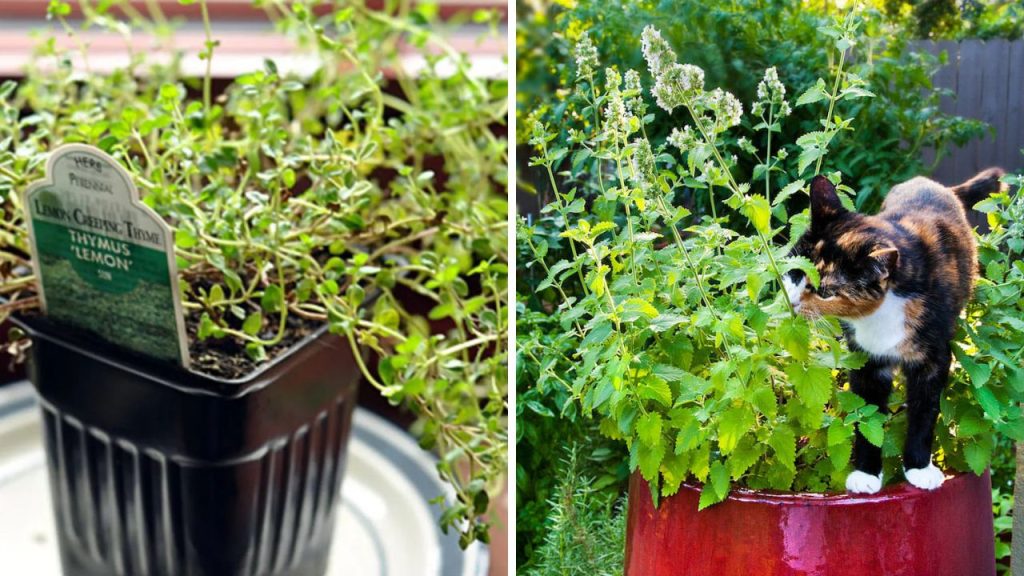Fall is far from the end of the gardening season—it’s actually one of the most magical times to create a vibrant, colorful outdoor space. As the summer heat fades and the crisp autumn air settles in, your garden has the perfect backdrop to showcase rich hues, dramatic textures, and late-season blooms.
Whether you’re looking to refresh your outdoor living space, add curb appeal, or simply enjoy a little therapeutic gardening, these fall flower garden ideas offer inspiration for gardeners of all levels. From classic mums to bold grasses and charming porch planters, these ideas can turn any backyard, patio, or back porch into a seasonal sanctuary.
Let’s explore 21 stunning ways to embrace the beauty of fall through flowers.
1. Chrysanthemum Garden Borders
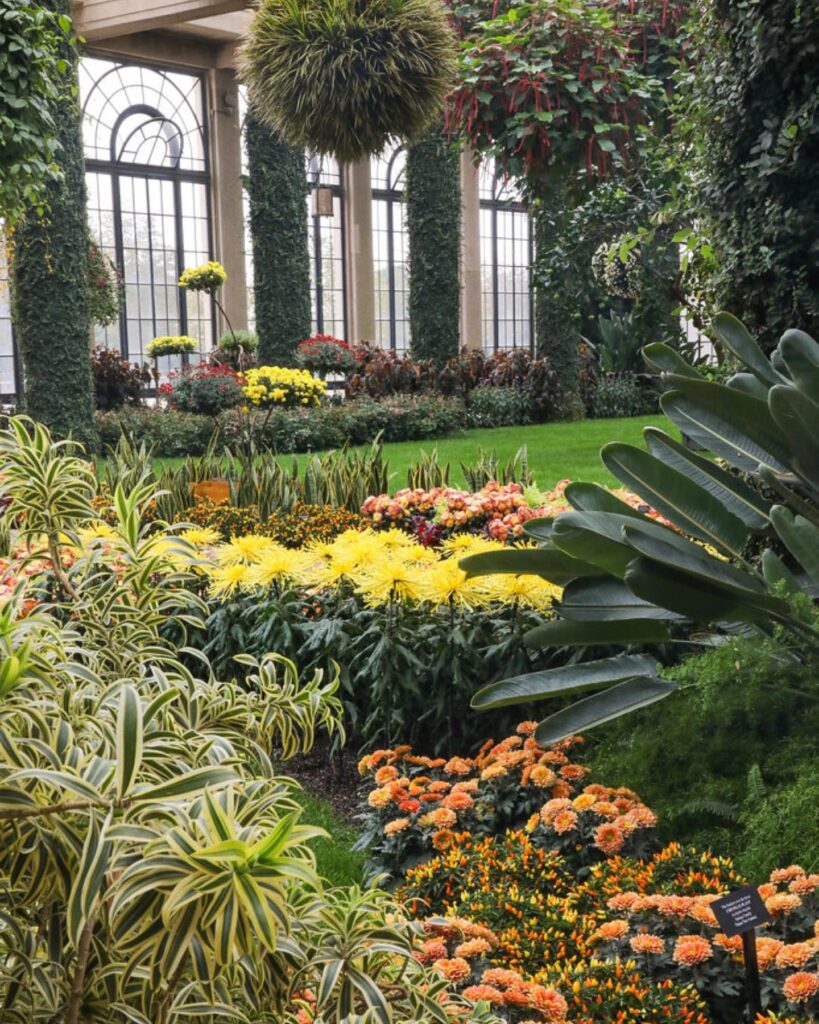
Chrysanthemums—better known as mums—are iconic in fall gardens, and for good reason.
These hardy perennials come in a rich array of colors including golden yellow, burnt orange, deep red, and even purple. Planted along your garden borders, mums add a punch of color that carries your landscape into the cooler months with style.
Because they’re compact and bushy, mums make an excellent choice for defining pathways or outlining the edges of flower beds. For a more modern back porch idea, consider placing mums in matching containers that align the perimeter of your patio.
They thrive best in full sun and well-drained soil. Once established, they’re relatively low-maintenance, and many varieties can even return year after year if you plant them early enough in the season. Pair them with ornamental grasses or late-season sedum to create a multidimensional effect that looks curated and effortless.
2. Potted Asters on the Porch
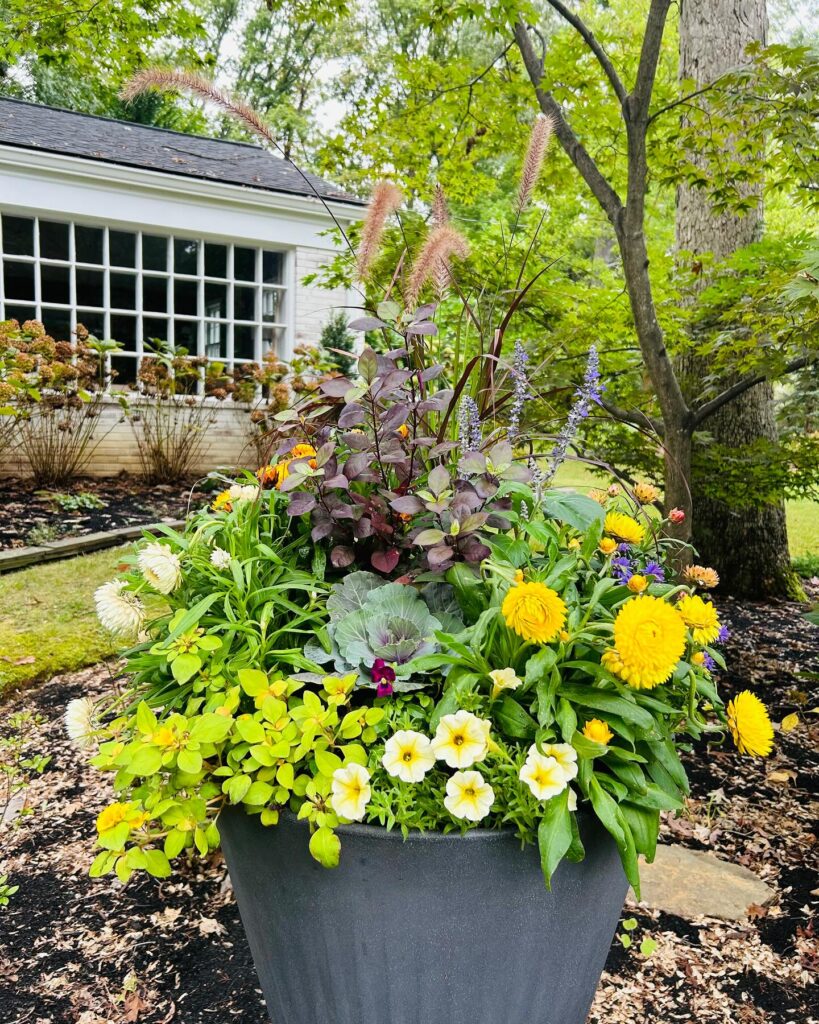
Asters are a fall favorite known for their daisy-like blooms and vibrant purple, pink, or white petals.
They look stunning when arranged in decorative containers on your porch or patio, instantly elevating your back porch decor. Because asters bloom late in the season, they offer bursts of color right when your summer annuals start to fade.
To create an eye-catching display, group pots of varying heights near your entryway or outdoor seating area. Choose rustic containers like wooden barrels or galvanized buckets for a cozy, country vibe, or sleek black pots for a modern aesthetic.
Asters love sunlight and should be watered regularly but not excessively. They’re also butterfly magnets, adding life and movement to your outdoor living area. Pair with pumpkins or fall foliage for a seasonal statement that doesn’t require a full garden redesign.
3. Ornamental Cabbage and Kale Displays
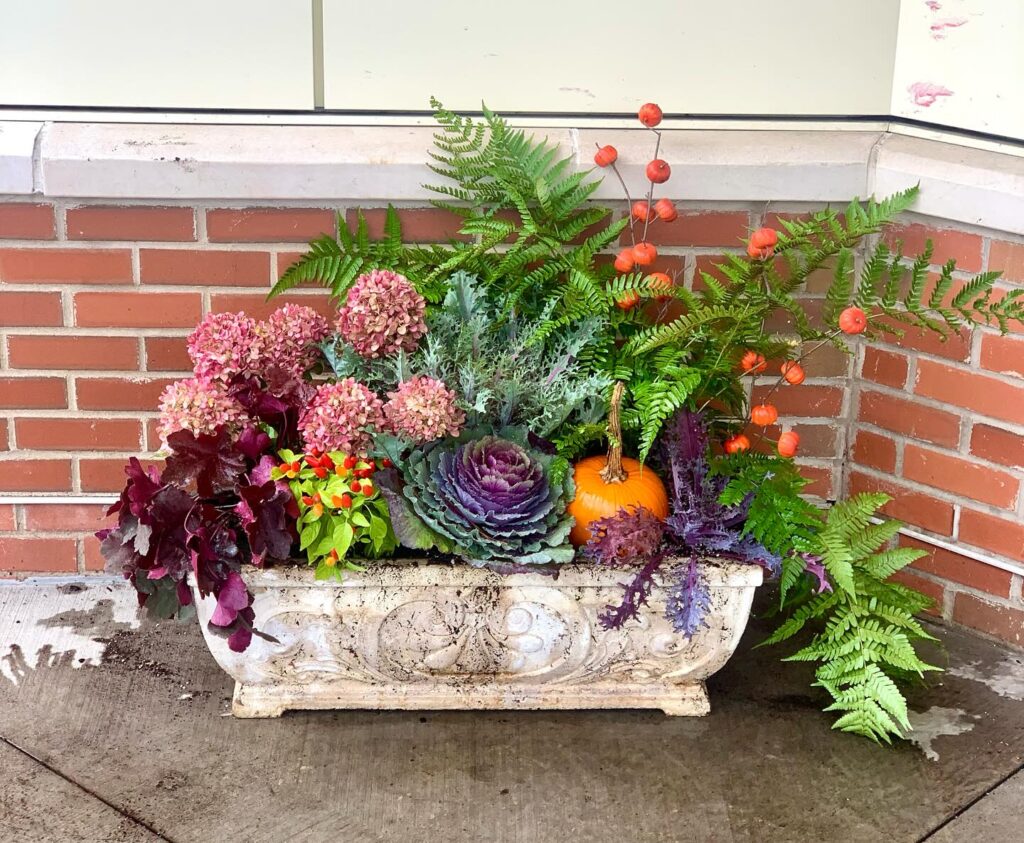
If you’re craving unique textures and cool-toned colors, ornamental cabbage and kale are ideal.
These leafy rosettes come in shades of purple, white, and green, and they thrive in colder weather. Planted in containers or used to edge flower beds, they offer a striking contrast to typical fall blooms.
Ornamental cabbage pairs beautifully with chrysanthemums, pansies, and even small evergreen shrubs, making them perfect for layered container gardens. They can easily be worked into modern patio furniture arrangements—just place a container or two alongside your seating area to add natural charm.
They prefer full sun to partial shade and moist, well-drained soil. Best of all, they become more vibrant as temperatures drop, giving your garden or back porch a bold, frost-resistant refresh.
4. Layered Raised Beds with Fall Perennials
:max_bytes(150000):strip_icc()/SPR-raised-bed-garden-ideas-4172154-hero-5d94244389e548e1ab545183230e7716.jpg)
For a lush and dynamic display, raised garden beds allow you to create beautiful layers using a mix of perennials.
Plant taller flowers like rudbeckia or echinacea toward the back, mid-height options like sedum or blanket flowers in the middle, and shorter ground covers like creeping Jenny or ajuga in the front. This staggered arrangement provides depth and ensures continuous blooms throughout the fall season.
Raised beds are also ideal for improving drainage and soil quality. Plus, they lend a tidy, structured look that works well with modern back porch ideas and contemporary garden designs. Consider edging your beds with wood or stone for added definition.
Don’t forget to mulch after planting—this helps retain moisture and insulates roots as temperatures begin to dip.
5. Bold Rudbeckia for Fall Drama
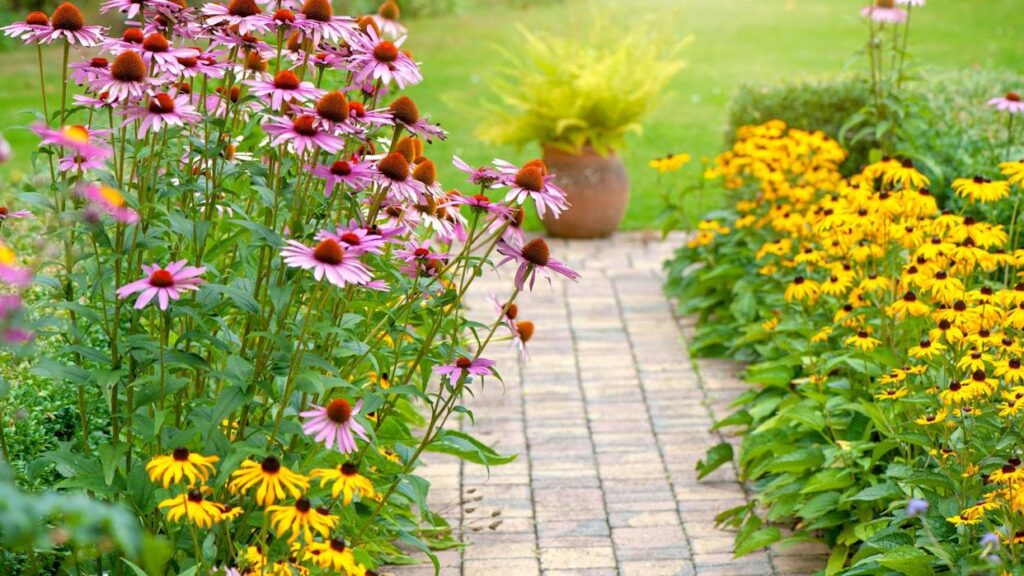
Often referred to as black-eyed Susans, rudbeckia are late-season superstars.
Their golden-yellow petals with dark centers bring a dramatic pop of color to any garden. Rudbeckia thrives in full sun and attracts pollinators like bees and butterflies. They also make excellent cut flowers, allowing you to bring autumn’s beauty indoors.
These tall, upright plants pair well with ornamental grasses and purple aster for a show-stopping contrast. Use them as a focal point in garden beds or plant them in large clusters along fences or walls to create a bold backdrop.
Thanks to their drought tolerance and long bloom period, rudbeckia are perfect for low-maintenance fall flower garden ideas. They’re also deer-resistant, which is a bonus in rural or wooded areas.
6. Marigold Mass Plantings
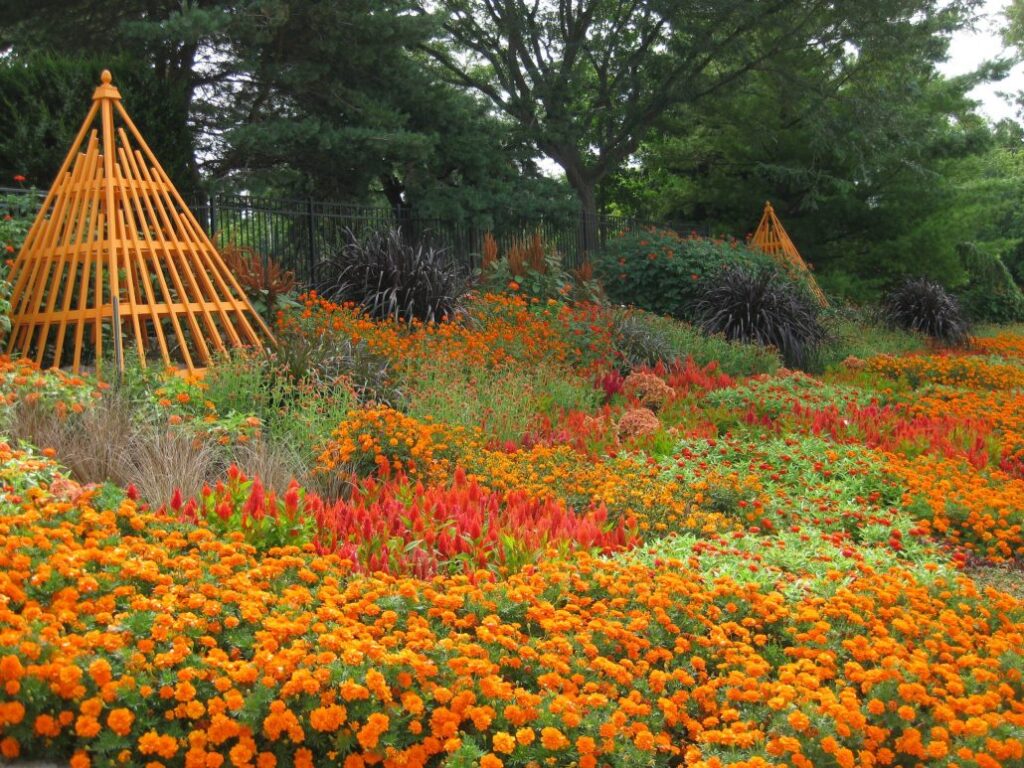
Marigolds aren’t just for summer—they can be planted late in the season and thrive in early fall.
Their fiery orange and yellow blooms are perfect for echoing the autumn color palette, and they’re one of the easiest flowers to grow from seed. For maximum impact, plant marigolds in mass groupings in garden beds, or fill large containers with them to brighten your outdoor living area.
These flowers prefer full sun and well-drained soil and will keep blooming until the first hard frost. Plus, marigolds are known for their pest-repellent qualities, making them excellent companion plants for fall vegetables like kale, broccoli, and spinach.
Whether you’re planning a modern or rustic look, marigolds bring joyful energy and simplicity to any garden setting.
7. Sedum Stonecrop Borders
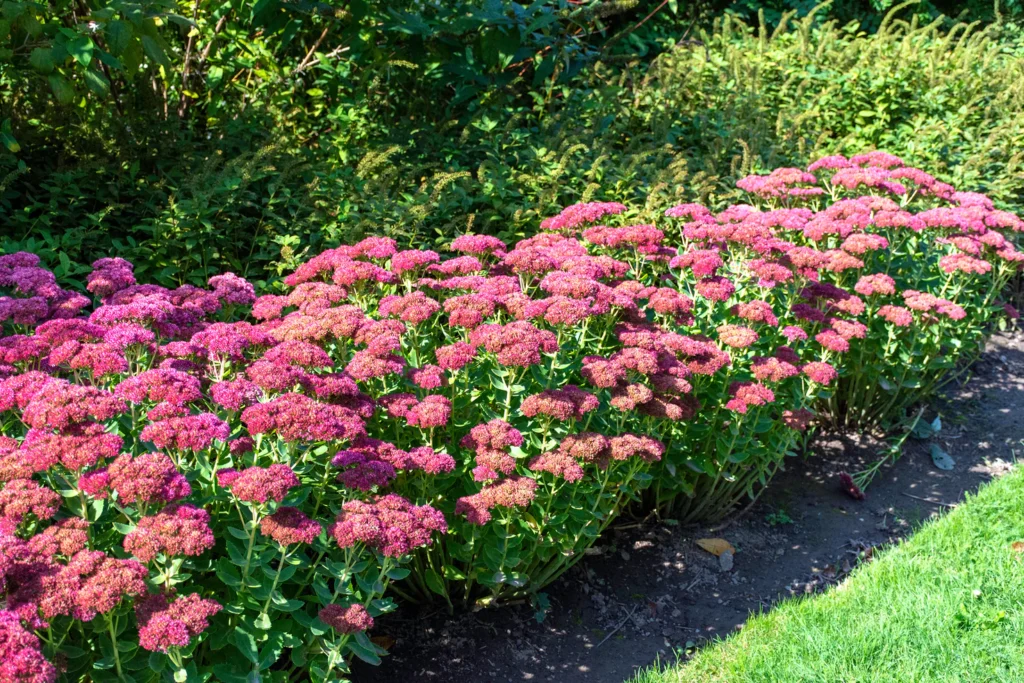
Sedum—especially the ‘Autumn Joy’ variety—is one of the most reliable and eye-catching fall perennials.
Its fleshy green leaves and clustered pink blooms gradually deepen into rich copper and burgundy as the season progresses. Sedum is incredibly low-maintenance and drought-tolerant, making it ideal for both traditional beds and more modern back porch landscapes.
Use sedum as a border plant, in rock gardens, or even in containers. Because of its structural form and changing color, sedum adds both visual interest and seasonal dimension to any garden.
Pair it with ornamental grasses or purple coneflowers for a soft yet striking contrast. Once the flowers fade, the seed heads still look beautiful dusted with frost, extending your garden’s interest well into early winter.
8. Mixed Containers with Pansies and Violas
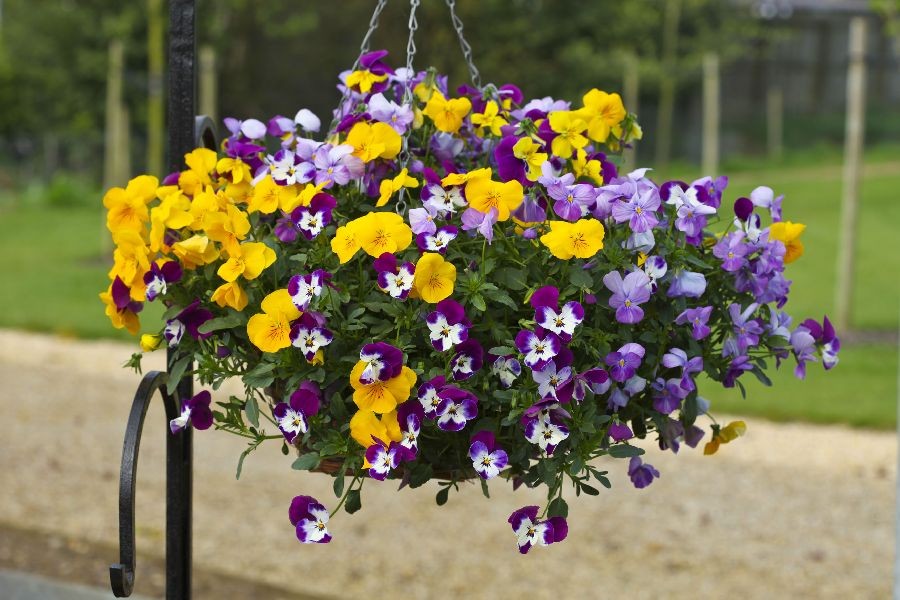
Pansies and violas are among the most cheerful and cold-tolerant flowers available.
Their happy “faces” and wide range of colors make them ideal for fall container gardens. Use them to freshen up your back porch decor by filling window boxes, hanging baskets, or decorative urns with a mix of both.
These flowers thrive in cooler temperatures and can even bounce back after a light frost. Choose a variety of colors—from deep purple and crimson to buttery yellow and snow white—for an eye-catching and whimsical look.
To keep them blooming, deadhead spent flowers regularly and water when the soil begins to dry out. For a layered container look, combine with trailing ivy, dusty miller, or ornamental grasses.
9. Ornamental Grasses for Texture and Movement
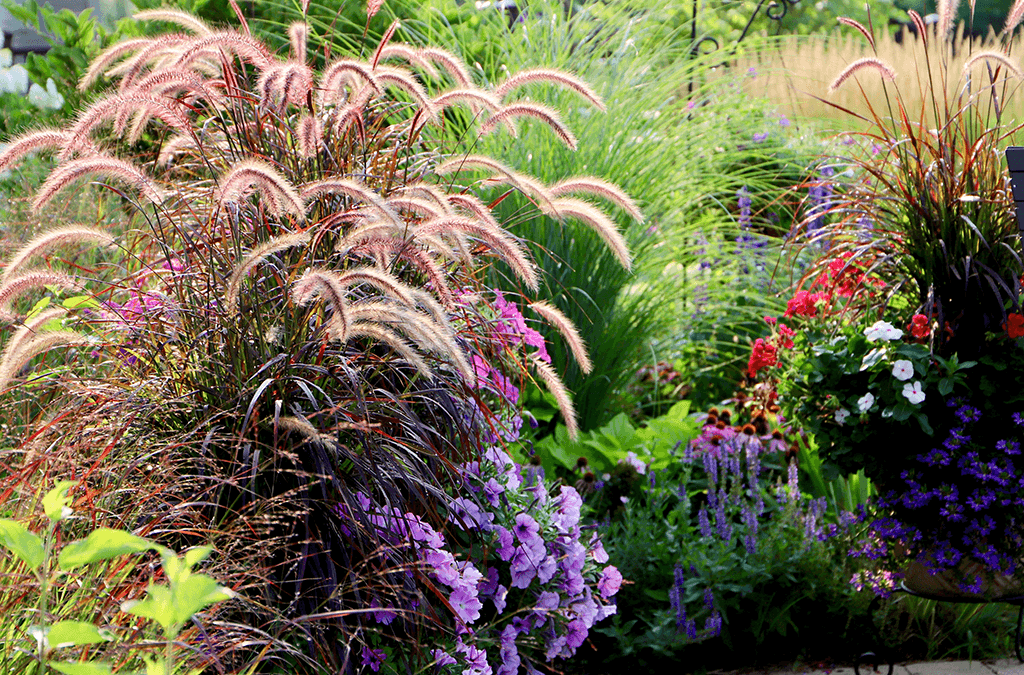
If you’re looking for an elegant way to add texture and vertical height, ornamental grasses are a must-have.
Varieties like fountain grass, switchgrass, and blue fescue bring dynamic movement and structure to flower beds and planters. Their feathery plumes sway with the breeze and create a natural, graceful rhythm in your landscape.
Grasses are excellent for defining garden spaces or framing outdoor seating areas with modern patio furniture. They also blend beautifully with bold-colored blooms like echinacea or sedum, making your fall garden feel curated and cohesive.
Most ornamental grasses are drought-tolerant and require little maintenance. Just trim them back in late winter or early spring to prepare for next year’s growth.
10. Coneflower and Goldenrod Pairings
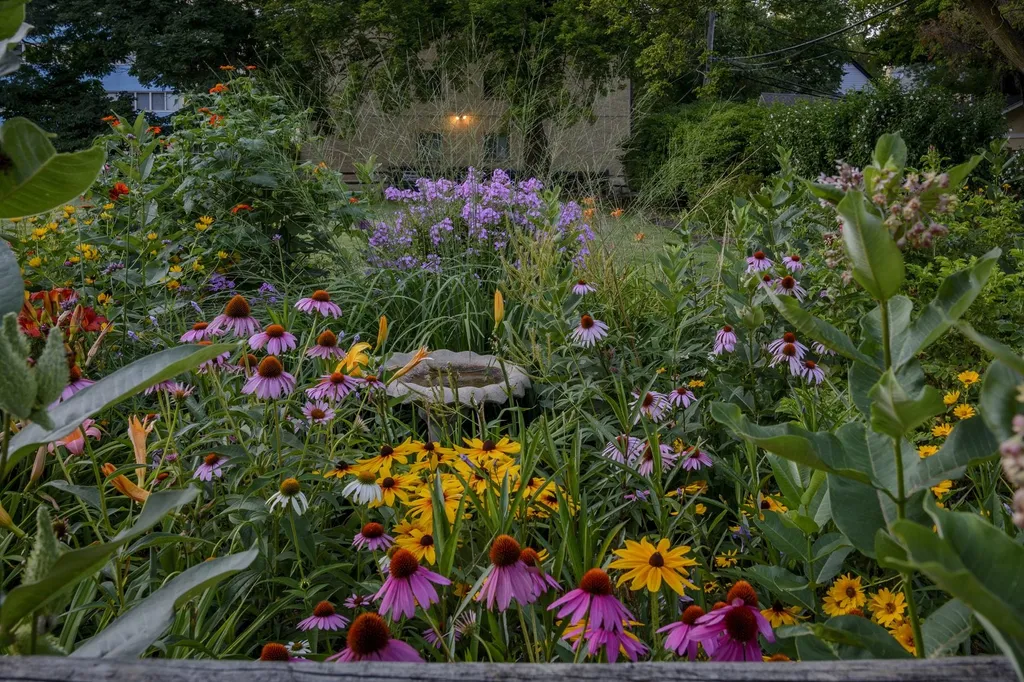
Coneflowers (echinacea) and goldenrod make a striking combination that embodies fall’s warmth and wild charm.
Echinacea’s soft purple petals and bold centers contrast beautifully with goldenrod’s bright yellow plumes. Together, they create a naturalistic look perfect for cottage gardens or relaxed outdoor living designs.
These perennials are loved by pollinators and are incredibly hardy, thriving in a range of soil types and light conditions. They bloom into late summer and well into fall, giving your garden long-lasting appeal.
Plant them together in beds or use them to flank entryways or pathways. Their bold color and textural contrast will brighten up even the most subdued garden spaces.
11. Fall Bulbs for Late Blooming Surprises
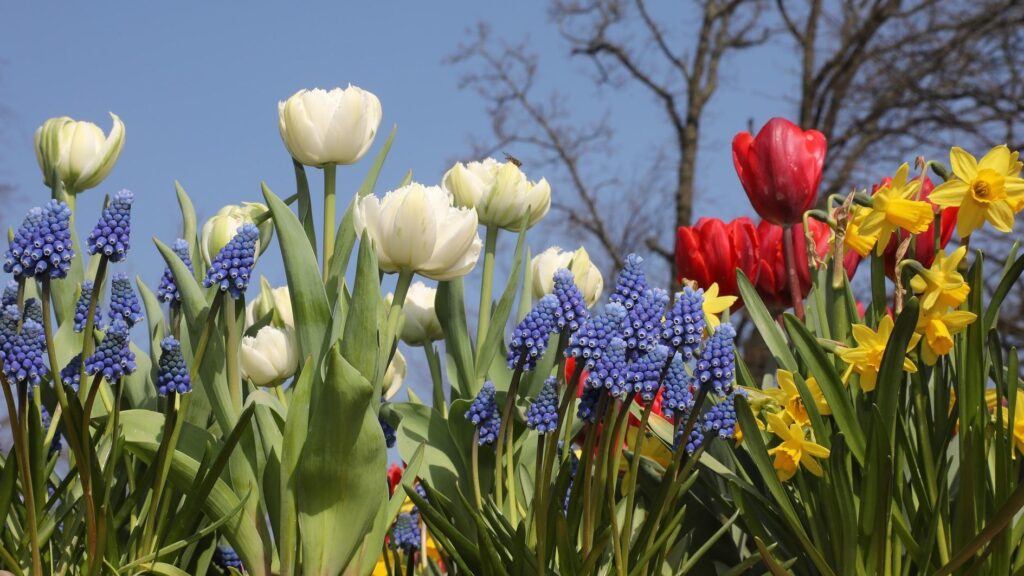
While bulbs are often associated with spring, there are several fall-blooming varieties that can add unexpected beauty to your garden.
Autumn crocus, colchicum, and sternbergia are just a few bulbs that bloom in September and October, offering delicate color when many other plants are winding down. These flowers are perfect for tucking into garden beds, rock gardens, or even grassy lawns.
Plant bulbs in well-draining soil in a sunny to partially shaded spot. They’ll bloom reliably year after year and often multiply over time, creating a naturalized effect.
Adding fall bulbs is a simple way to surprise visitors and bring a touch of magic to your garden when they least expect it.
12. Japanese Anemones for Elegant Fall Blooms

Japanese anemones bring an air of soft elegance to fall gardens with their delicate, open-faced blooms and long, swaying stems.
Often blooming from late summer well into October, these perennial beauties come in shades of pink, white, and pale lavender, making them a graceful complement to more robust fall flowers like mums or sedum.
They’re perfect for garden borders or as a backdrop to modern back porch ideas where their light, airy presence balances structured patio furniture or hardscaping. Japanese anemones prefer partial shade and consistently moist, well-drained soil.
Plant them near walkways or patios where their graceful movement in the autumn breeze can be admired. Over time, they will naturalize, spreading into elegant drifts that offer years of late-season beauty. Whether paired with ferns for a woodland feel or surrounded by other fall perennials, these anemones add quiet sophistication to any garden.
13. Heuchera for Colorful Fall Foliage
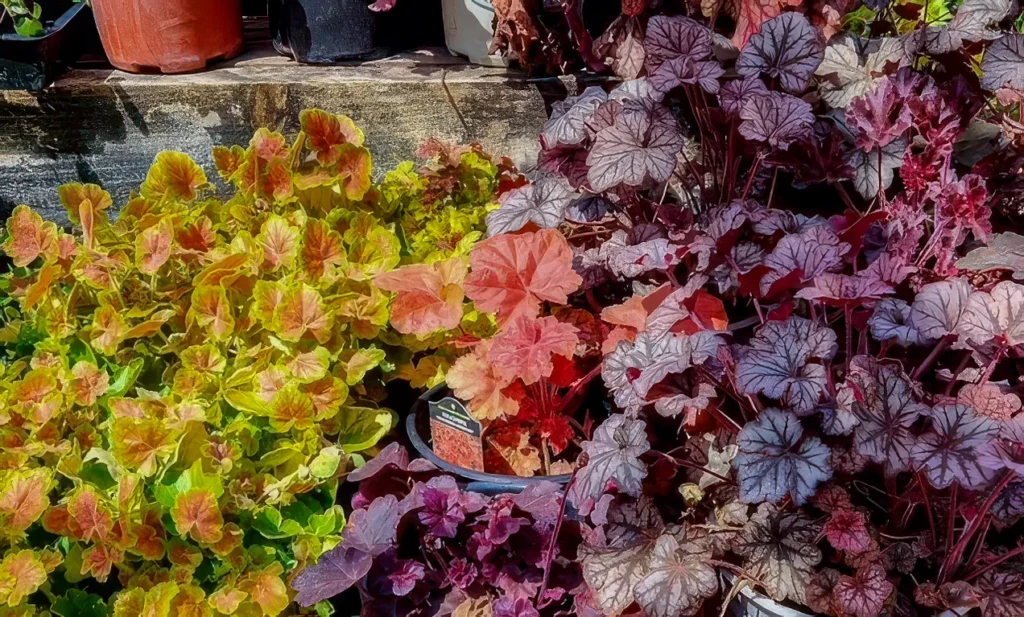
While many fall flower garden ideas focus on blooms, heuchera—also known as coral bells—adds rich, jewel-toned foliage that shines through the season.
This low-growing perennial features ruffled leaves in colors ranging from deep burgundy and caramel to lime green and plum. While its tiny flowers appear in spring and summer, it’s the foliage that makes heuchera a must-have for fall.
Heuchera thrives in containers, rock gardens, or as a border plant in shady or partially sunny spots. Mix multiple varieties for a bold contrast, or pair with ferns and ornamental grasses for a layered, modern look.
Ideal for back porch decor, these plants add a pop of color even after your fall blooms begin to fade. And because they’re evergreen in many zones, they continue to provide texture and interest throughout the winter months.
14. Fall Window Boxes with Mixed Textures
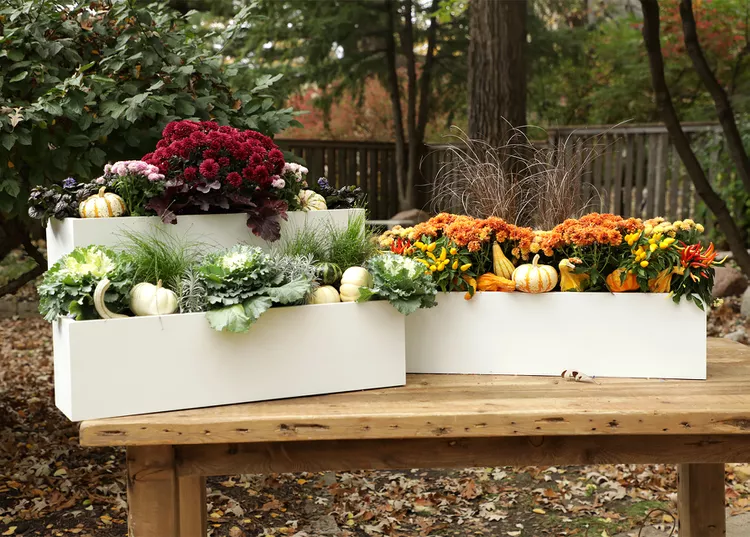
One of the easiest ways to bring fall charm to your home is by updating your window boxes with seasonal plants.
Mix flowers like pansies, ornamental cabbage, and trailing ivy for a rich blend of color and texture. Add in mini pumpkins or gourds for an extra festive touch that complements both traditional and modern patio furniture settings.
This approach works especially well for smaller spaces like balconies, porches, or townhome gardens. The key to a successful fall window box is variety—use a mix of upright, mounding, and trailing plants to create a full, cascading look.
Be sure to water regularly and remove any spent blooms or dried foliage. As temperatures cool, your fall window boxes will only get more vibrant, turning a simple ledge into a head-turning focal point.
15. Witch Hazel Shrubs for Late-Season Color
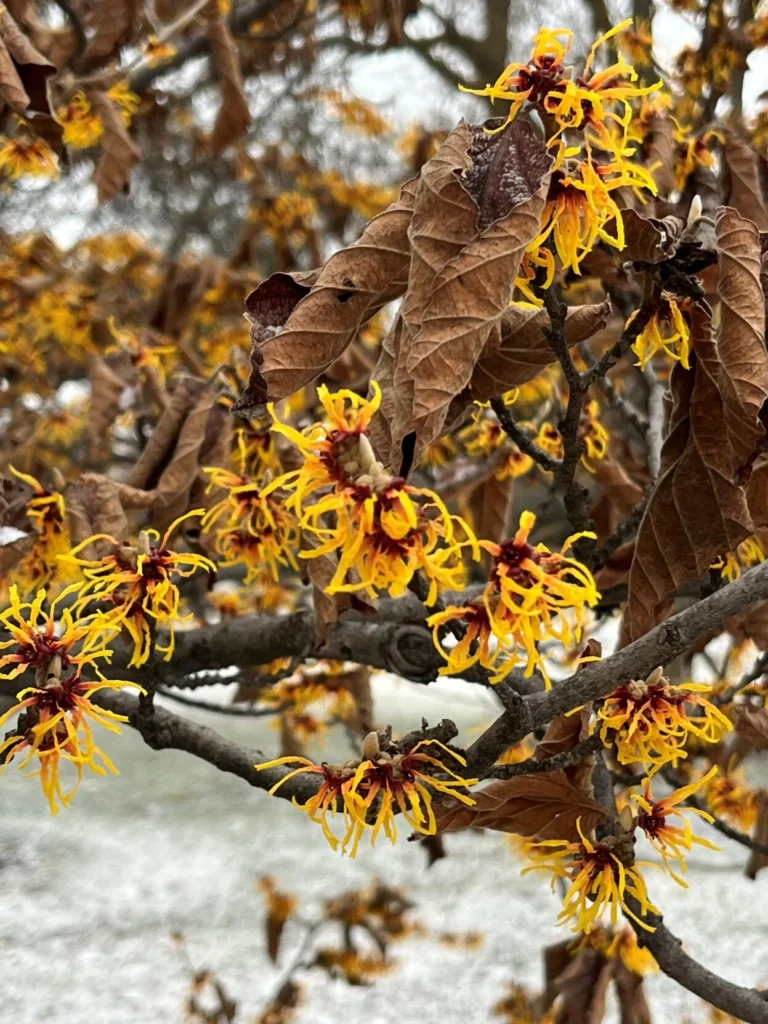
Witch hazel is an often-overlooked shrub that provides vibrant color and delicate blooms when most other plants are preparing for dormancy.
In late fall, its spidery yellow to reddish-orange flowers unfurl, filling your garden with unexpected beauty. Its foliage also turns brilliant shades of gold and red, offering a double dose of seasonal interest.
Witch hazel grows well in full sun to partial shade and prefers slightly acidic, moist soil. It’s an excellent addition to mixed borders or woodland gardens where it can shine against evergreens or more muted fall plants.
If you’re looking to add structure and height to your outdoor living area, witch hazel offers year-round appeal—from its fall color to its winter bloom and spring leaf-out. It’s also highly deer-resistant and relatively easy to care for, making it a great long-term investment for your garden.
16. Blanket Flowers for Bold Autumn Hues
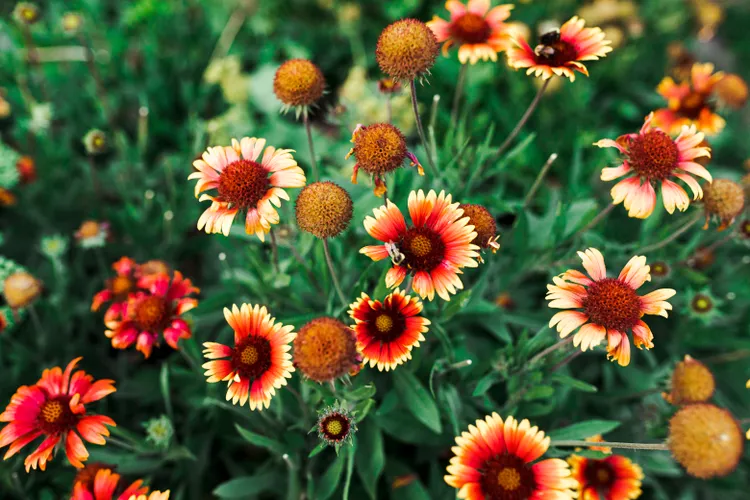
Blanket flowers (Gaillardia) are known for their fiery red, orange, and yellow petals that echo the colors of falling leaves.
These cheerful perennials are a late-blooming powerhouse, continuing to flower until the first hard frost. Their daisy-like blooms sit atop long, wiry stems, making them ideal for both flower beds and cutting gardens.
They thrive in full sun and prefer well-drained soil, making them great for low-maintenance landscapes or drought-prone areas. Plant them alongside purple asters or blue salvias to create a high-contrast fall color palette.
Blanket flowers also attract butterflies, adding life to your modern back porch ideas and outdoor settings. Whether you’re filling raised beds or creating colorful borders, Gaillardia provides continuous joy well into the autumn months.
17. Montauk Daisies for Coastal Fall Style
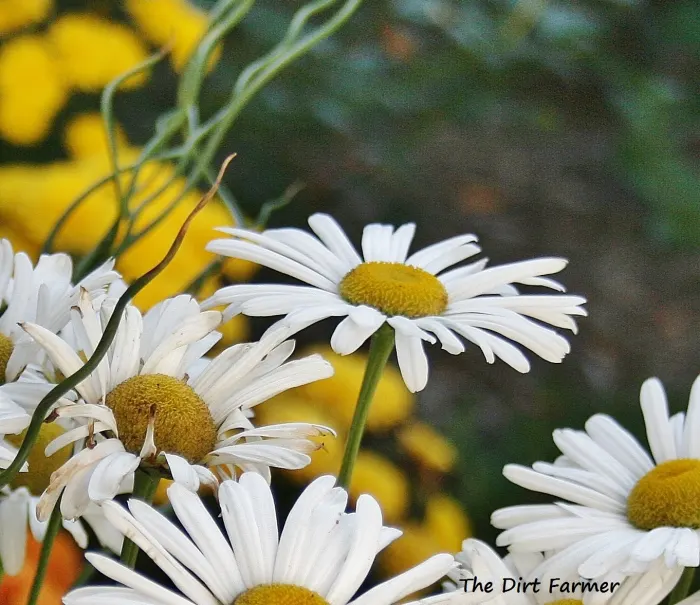
Montauk daisies, also known as Nippon daisies, offer a bright and cheerful daisy-like bloom that appears just as most summer flowers fade.
Their large, crisp white petals and yellow centers stand out against deep green foliage, bringing a fresh twist to your fall garden. These perennials bloom from late September into November and can withstand cooler temperatures and salty air, making them ideal for coastal climates.
They look stunning when mass-planted in garden beds or placed in containers around modern patio furniture for a clean, minimalistic aesthetic. Pair with ornamental grasses and pumpkins for a beautiful fall contrast.
Montauk daisies thrive in full sun and well-drained soil, and once established, they require minimal care. Simply prune them in midsummer to keep them compact and bushy for fall.
18. Camellias for Southern Fall Gardens
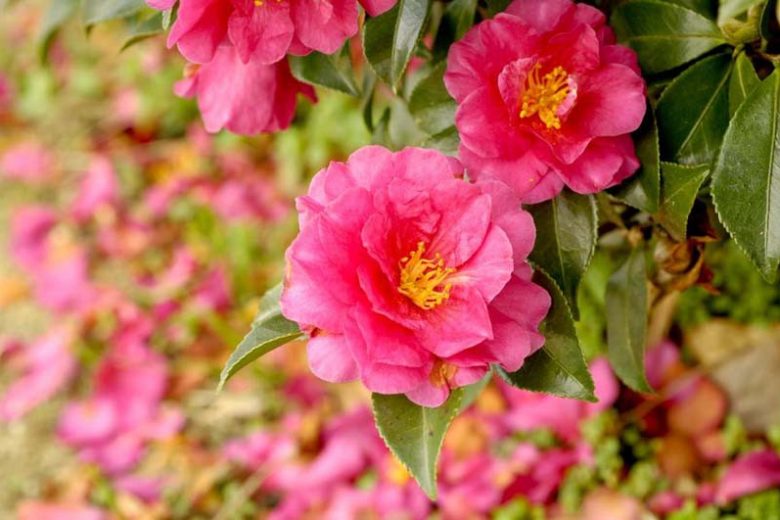
In warmer zones, especially in the southern U.S., camellias are a beloved fall-flowering shrub that offers timeless elegance.
These evergreen beauties bloom from October through December, with large, rose-like flowers in shades of pink, red, or white. Their glossy, dark green foliage provides year-round structure, making them a stylish and functional choice for any garden design.
Camellias thrive in partial shade and acidic, well-drained soil. Plant them as stand-alone specimens near porches or patios, or use them to anchor garden beds filled with seasonal blooms.
They pair well with back porch decor elements like brick, wrought iron, or painted wood, giving your space a Southern charm that transitions beautifully through the seasons. Choose early-blooming varieties for the most vibrant fall displays.
19. Autumn Containers with Dried Elements
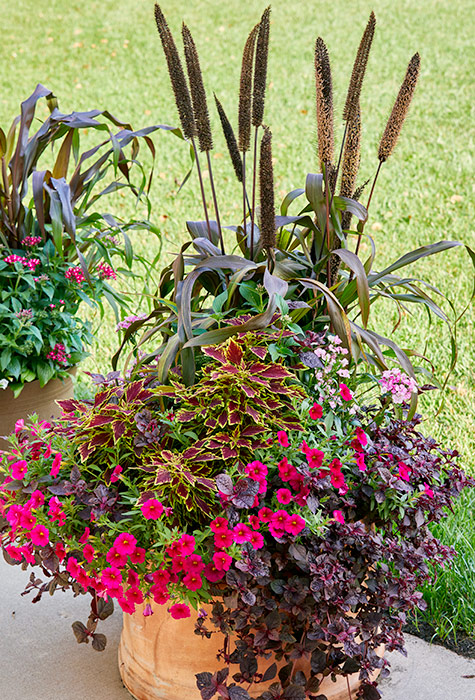
Fall is the perfect time to get creative with mixed containers that combine live plants with dried elements.
Try pairing flowering kale, mums, and pansies with dried corn stalks, wheat bundles, or preserved eucalyptus for an artful, seasonal look. These arrangements bring texture and height to patios, porches, or entryways and can easily be tailored to suit both rustic and modern back porch ideas.
Use tall containers to create dramatic focal points or group smaller pots together for a layered effect. Neutral-toned planters in ceramic, wood, or concrete help the colors of the plants and dried elements pop.
This idea works particularly well for those who want beautiful outdoor living decor without the upkeep of a full flower bed. Just swap in new seasonal elements as needed to keep your display fresh.
20. Snapdragons for Unexpected Late Blooms
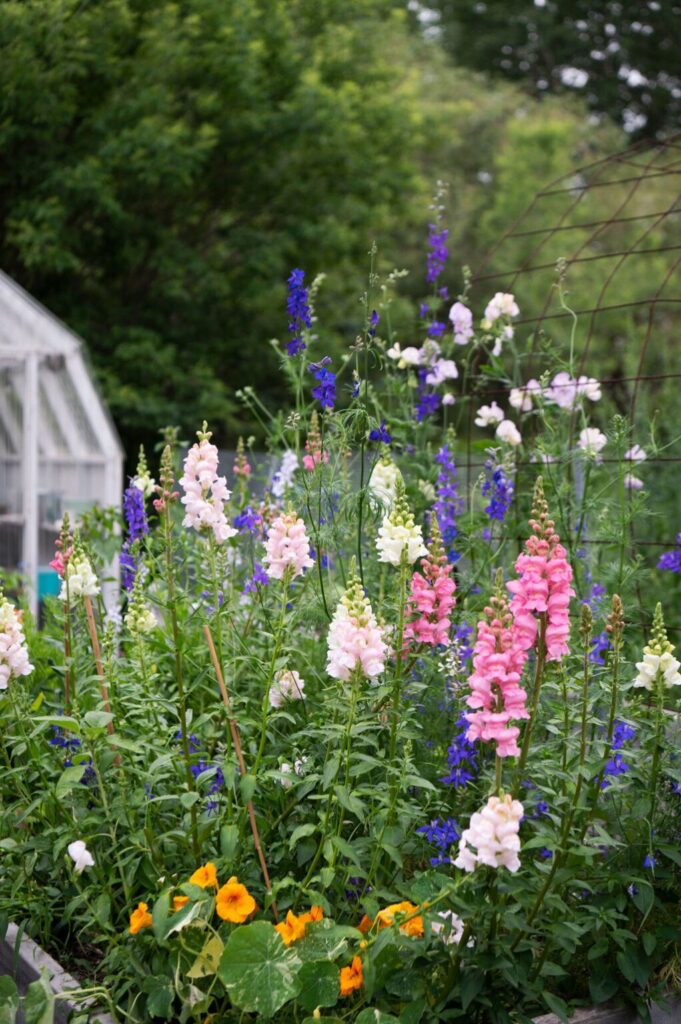
Snapdragons are traditionally planted in spring, but many varieties thrive in cooler fall temperatures and continue to bloom well into the season.
These vertical bloomers come in a wide range of hues—from soft pastels to bold reds and oranges—making them a versatile addition to fall container gardens or beds.
Snapdragons are especially useful for filling in gaps left by summer plants, and their upright form adds height and visual interest. Pair them with rounder blooms like pansies or cabbage for a balanced look in containers or around seating areas with modern patio furniture.
They perform best in full sun to partial shade and well-drained soil. With a little deadheading and care, snapdragons can bloom through frost and even survive mild winters in some zones.
21. Combine Evergreens with Fall Flowers for Year-Round Interest
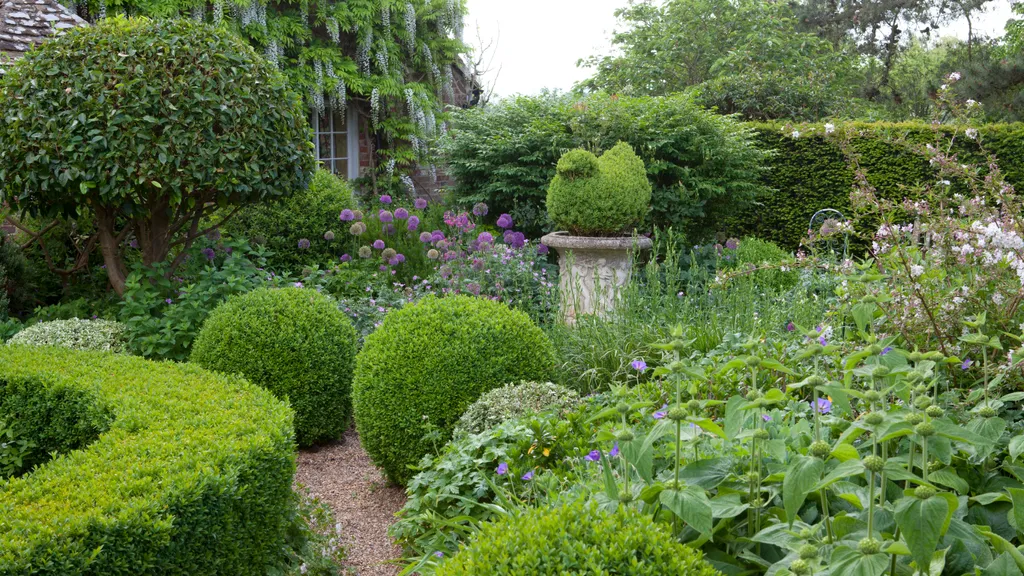
For a truly balanced and sustainable fall flower garden, consider mixing in evergreen plants.
Boxwoods, dwarf conifers, or creeping juniper create a solid green backbone that complements fall blooms beautifully. By planting evergreens alongside chrysanthemums, sedum, or ornamental grasses, you ensure that your garden doesn’t lose all visual interest once the flowers fade.
This technique is particularly useful in modern back porch and patio designs where you want consistency throughout the seasons. Evergreens provide structure, while seasonal flowers add temporary bursts of color.
Use evergreens as anchors in garden beds or focal points in large containers. Their versatility and reliability make them the perfect partner for showcasing your fall flowers while preparing your garden for winter.
Conclusion: Embrace the Beauty of Fall with a Flower Garden That Shines
Fall is often seen as the winding down of the gardening year, but as these 21 ideas show, it’s actually a time of incredible beauty, richness, and opportunity.
By choosing plants that thrive in cooler temperatures—from blooming perennials and ornamental grasses to striking foliage and creative container arrangements—you can turn your yard, patio, or porch into a celebration of the season.
Whether you’re inspired by modern back porch ideas, drawn to classic cottage gardens, or just looking to enjoy a little more time outdoors, there’s a fall flower garden idea here for everyone.
So grab a trowel, sip some apple cider, and give your outdoor space the autumnal glow it deserves.
